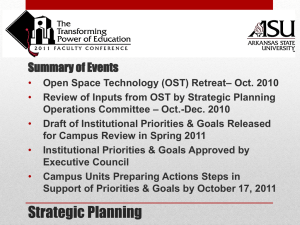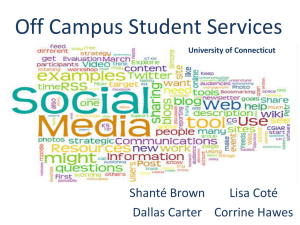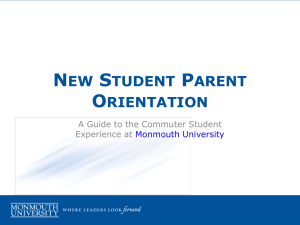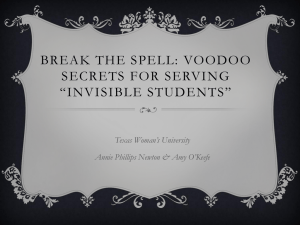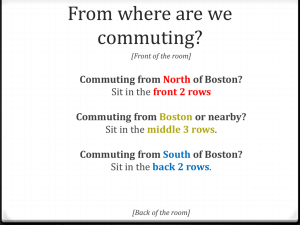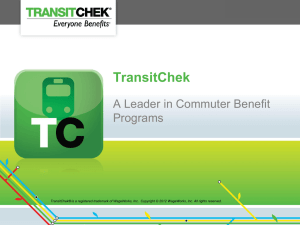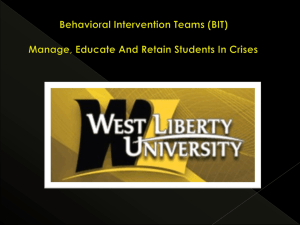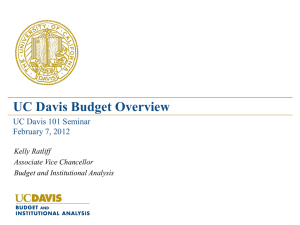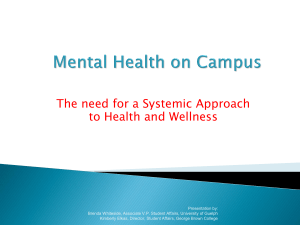ASU`s definition of COMMUTER Students
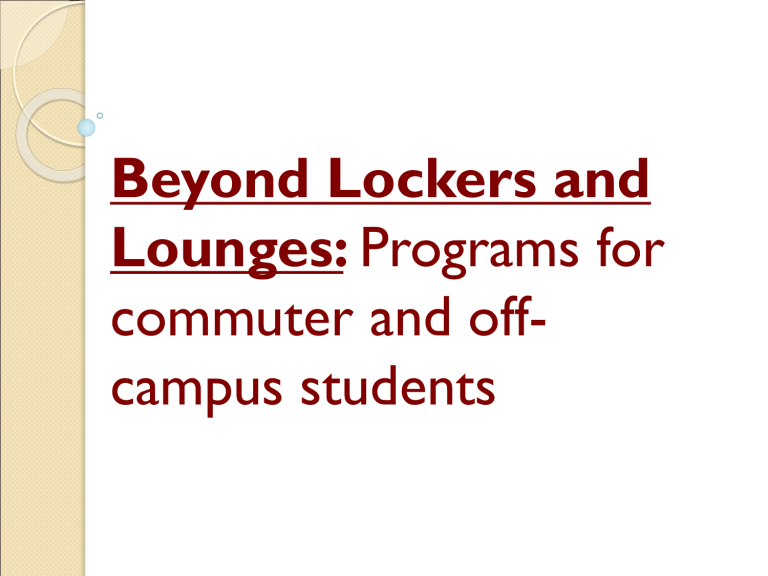
Beyond Lockers and
Lounges: Programs for commuter and offcampus students
B.T.E.O.T.W.U.W.B.A.T.
Definition
Practice based in theory
Organizational structure
Successful programs and services
Revenue and self sustaining
Additional resources
Poll Question #1
At what type of institution are?
Community College (most students live off campus)
Community College (most students live on campus)
4 Year Public Institution (most students live off campus)
4 Year Public Institution (most students live on campus)
4 Year Private Institution (most students live off campus)
4 Year Private Institution (most students live on campus)
Poll Question #2
How do you define “commuter” on your campus?
Any student not living in University owned housing, i.e. students commuting from home and students living just off campus
Students who commute from their families’ or their own home
Students who have never lived on campus
Only undergraduate students
Both undergraduate and graduate students
Just graduate students
Other (write in)
WHO IS A COMMUTER ???
“Traditional Age” student living in family’s home or off campus
Transfer student
Veteran student
Adult learner
Student with dependants
Part time student
Online learner (hybrid programs)
DEFINITIONS
“All students who do not live in institution-owned housing.”
ASU’s definition of COMMUTER
Students
◦ A student who lives at their permanent address
◦ ALL Commuter Students are Off-Campus students
Elliptical Orbit Model
– John Nonnamaker, Providence College, Rhode Island
Family
Student
Academics
Social Life/Work
Professional
Development
Campus Activities/
Student Organizations
Tinto (1993)- Model of
Institutional Departure
To persist, students need integration into:
formal (academic performance) and informal (faculty/staff interactions)
academic systems
(extracurricular activities) and informal
(peer-group interactions) social systems.
ASU’s OFFICE STRUCTURE
Off-Campus Housing
Services
Housing Guide
On-line housing locator service (ASU specific)
◦ Roommate matching
Student Legal Services
Moving Up – Moving Out
◦ off-campus transition presentations
Adult Learner Resources
Individualized Success
Coaching
Connections to tutoring, software training, and academic workshops
Partner with Veteran
Services and Transfer
Center
ASU Family Resources
Provide university families with resources
Manage Child Care Center on campus
Advocate for students with dependants
Expand family responsive policies
Community Outreach &
Partnerships
City partnerships
Safety Forums with campus and city police
Off-Campus Housing Fairs
Community Service events
Community Mentoring program
Behavior adjudication
Restorative Justice model
One of the challenges for a commuter student is finding a place on campus where they belong and can have substantive interactions with other students.
◦ Orlando in Jacoby, 2000
ENGAGEMENT
How do I provide students with the resources, services and support so that they can be engaged?
How do I connect and engage our commuters with faculty, staff and students?
How do I provide transformative and seamless learning opportunities?
How do I show off-campus & commuter students they matter on this campus?
How can I translate what is happening in the
Residence Halls for commuter students?
Especially for first year students
PEER MENTORS
“Close working relationships with other students not only provide emotional support but also powerfully strengthen educational gains from the formal curriculum.”
Chickering in Jacoby, 2000, p. 23
Community Mentoring
Collaborative effort
Provides students the opportunity for career exploration/development
Shadowing a city officials
Designed to strengthen and broaden the Town Gown relationship
Enhance academic retention efforts
Community Liaisons
A student position embedded within the Be A Good Neighbor properties
◦ Engage & connect students together through events, programs, & services
◦ Assist in building stronger, cooperative communities and help to improve the quality of life in the community
Moving from Programming to an Engagement Model
Willy Wonka’s Elevator
◦ Tie the Change to Strategic Plans
◦ Re-emphasize the importance of the work we are doing
◦ Work to develop a more encompassing peer mentorship model
◦ Explore ways to increase student access and utilization of current programs on campus
Advocating for Your Students
Student Government Representatives
Educating colleagues about the commuter experience
Involving and educating parents and family members about their student’s collegiate experience
Using assessment data to demonstrate need
Going beyond the silo
Looking beyond institutional image
Advocating for Resources
Involving Key Stakeholders
◦ Off-campus partnerships – neighborhoods, cities
◦ On-campus partnerships – Parents Association
Funding
◦ Potential obstacles in getting started
Student fees
Student Government
Operating Budgets
◦ Partnerships for start-up funds
Student Government
Town/Gown relationships
VP of Student Affairs
Development Office
Financial Resources – Creating
Revenue Streams
ASU’s Be A Good Neighbor program
◦ Multiple tiers/levels to ‘buy in’
Fee for service concept
Adjust each year
ROI
Housing Fairs
◦ Pay to participate
Different price points for vender categories
QUESTIONS ???
National Resources
ACPA Commission for Commuter
Students and Adult Learners http://www.myacpa.org/comm/commuter/
National Clearinghouse for Commuter
Programs http://nccp.nsuok.edu/
International Town-Gown Network http://towngown.colostate.edu/faq.asp
THANK YOU!
Amy Golden
Director for Strategic Initiatives
Arizona State University amy.golden@asu.edu
(480) 965-7661
Off-Campus & Commuter Student Services http://www.asu.edu/studentaffairs/reslife/occss
